
Ducks have fat deposits between their skin and muscles to keep them afloat. This works to your advantage during cooking because, with proper prep, it's a built-in basting mechanism. Basting doesn't make a bird more moist, but it helps brown and crisp the skin considerably. Besides the fat deposits, another important difference between duck and chicken or turkey is that all of it -- even the breast -- is dark meat with strong flavor. So, be a little heavier handed with seasonings than you would with those other birds to temper the taste without much concern for masking it.
Step 1
Season your duck 24 to 48 hours ahead of time to impart maximum flavor. Rub a mixture of salt, pepper and other desired herbs, spices and aromatics all over the skin. Thyme, tarragon, sage, rosemary, marjoram, turmeric, coriander, curry powder, garlic powder, onion powder and citrus zests are commonly used. Or, use a favorite ready-made meat rub or spice mixture, like herbs de Provence, Italian seasoning or Cajun seasoning. Refrigerate the duck until cooking time.
Step 2
Rearrange your oven racks as needed to position the bird in the middle of the oven during roasting. Preheat to 450 degrees Fahrenheit. Roasting poultry initially at a high temperature and then reducing the heat is an effective way to produce crispy skin without drying out the meat.
Step 3
Trim off both wing tips and any excess fat and skin hanging loosely at the neck and tail ends with poultry shears. Save it for rendering over low heat later if you want to make a gravy or use it for a cooking fat at another time. Remove the neck and giblets; roast the neck with the duck if you want it and reserve some of the giblets for gravy.
Step 4
Poke holes in the skin of the duck all over with a fork or skewer, or make small nicks in it with the point of a knife. Don't cut into the muscle, though, or the bird dries out during cooking. These punctures in the skin allow the underlying fat to leak out as it melts during roasting to baste the skin.
Step 5
Stuff the cavity of the duck with fresh herbs, spices and aromatics to complement the exterior seasonings. Crushed garlic cloves, whole sprigs of rosemary and quartered pieces of orange or lemon with the rind work well, for example.
Step 6
Place the duck on the rack of a shallow roasting pan, breast-side down. Tuck the wings under the body and bind the legs with cooking string. Put the pan into the middle of the oven and set the timer for 30 minutes. Reduce the oven temperature to 350 F when the time elapses and set the timer for 30 minutes again.
Step 7
Take the roasting pan out of the oven after 1 hour. Turn the duck over so the breast faces up. Use a baster to remove the melted fat in the bottom of the roasting pan. The accumulating drippings can begin to smoke heavily if left in the pan, plus they eventually steam the duck, which interferes with crisping the skin.
Step 8
Return the duck to the oven and continue cooking for about another 1 1/2 hours; cooking time varies from 1 to 2 hours, depending on the size of the bird, the consistency and accuracy of your oven's temperature control, the color and material of the roasting pan and other factors. Take the duck's internal temperature with a cooking thermometer to check whether it's done. It should read 165 F in the middle of the breast and deep in the thigh.
Step 9
Remove the duck from the roasting pan when it's finished cooking and place it on a carving platter. Let it rest for about 10 to 15 minutes, then snip off the string around the legs and remove and discard the ingredients inside the cavity before serving.
Related Articles

How to Marinate BBQ Chicken Thighs & ...

How Do I Cook Duck Legs in a Dutch Oven?

Can I Cook Duck in Low Temperatures to ...

How Do You Tuck the Wings to Roast a ...
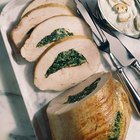
How to Cook Turkey Parts

How to Cook a Pheasant Breast So That ...
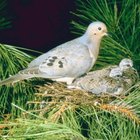
How to Clean and Cook a Mourning Dove
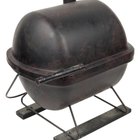
How to Cook Squab

How to Cook Duck Fillets

How to Cook a Goose on the Grill

How to Prepare & Cook Smoked Jowl
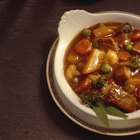
How to Cook a Neck Roast

How to Keep Turkey Moist
How to Prepare & Cook Wild Pheasant
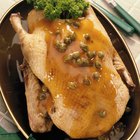
How to Cook Gadwall Duck in a Crock-pot

How to Broil Chicken on the Bone

How to Cook Turkey With Apple Juice

Slow Roasting a Leg of Lamb Until It Is ...
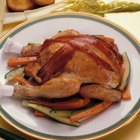
How to Grill a Cornish Hen on the ...
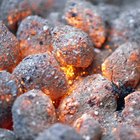
How to Cook Quail on a Grill
References
Writer Bio
Eric Mohrman is a food and drink, travel, and lifestyle writer living in Orlando, Florida. He has professional experience to complement his love of cooking and eating, having worked for 10 years both front- and back-of-house in casual and fine dining restaurants. He has written print and web pieces on food and drink topics for Visit Florida, Orlando Style Magazine, CrushBrew Magazine, Agent Magazine, Dollar Stretcher Magazine, The 863 Magazine and other publications.
Photo Credits
Jupiterimages/Photos.com/Getty Images